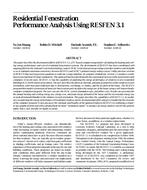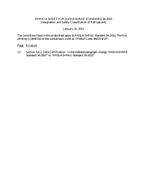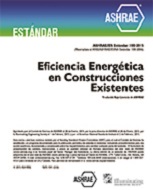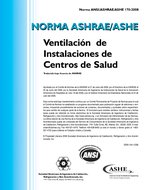Description
This paper describes the development efforts of RESFEN 3.1, a PC-based computer program for calculating the heating and cooling energy performance and cost of residential fenestration systems. The development of RESFEN has been coordinated with ongoing efforts by the National Fenestration Rating Council (NFRC) to develop an energy rating system for windows and skylights so as to maintain maximum consistency between RESFEN and NFRC’s planned energy rating system. Unlike previous versions of RESFEN that used regression equations to replicate a large database of computer simulations, Version 3.1 produces results based on actual hour-by-hour simulations. This approach has been facilitated by the exponential increase in the speed of personal computers in recent years. RESFEN 3.1 has the capability of analyzing the energy performance of windows in new residential buildings in 52 North American locations. The user describes the physical, thermal, and optical properties of the windows in each orientation, solar heat gain reductions due to obstructions, overhangs, or shades, and the location of the house. The RESFEN program then models a prototypical house for that location and calculates the energy use of the house using a well-known hourly computer simulation program. The user can vary the HVAC system, foundation type, and utility costs. Results are presented for the annual heating and cooling energy use, energy cost, and peak energy demand of the house and the incremental energy use or peak demand attributable to the windows in each orientation. This paper describes the capabilities of RESFEN 3.1, its usefulness in analyzing the energy performance of residential windows and its developmental effort and gives insight into the structure of the computer program. It also discusses the rationale and benefits of the approach taken in RESFEN in combining a simple-to- use graphical front-end with a detailed hour-by-hour “simulation engine” to produce an energy analysis tool for the general public that is user friendly yet highly accurate.
AUTHOR: Yu Joe Huang, Robin D. Mitchell, Dariush Arasteh, P.E., Stephen E. Selkowitz
CITATION: Thermal Performance of the Exterior Envelopes of Buildings VII
KEYWORDS: December, Florida, 1998
YEAR: 1998
Citation: Thermal Performance of the Exterior Envelopes of Buildings VII
Product Details
- Published:
- 1998
- File Size:
- 1 file , 1.6 MB
- Product Code(s):
- D-8068




